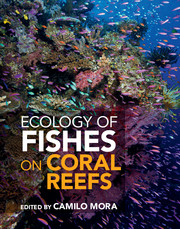21 results
Translation and linguistic validation of the Sheffield Profile for Assessment and Referral for Care (SPARC) to Colombian Spanish
-
- Journal:
- Palliative & Supportive Care , First View
- Published online by Cambridge University Press:
- 08 February 2024, pp. 1-10
-
- Article
-
- You have access
- Open access
- HTML
- Export citation
Effectiveness and safety of caplacizumab in acquired thrombotic thrombocytopenic purpura: health technology assessment and classification according to the methodology established in Colombia
-
- Journal:
- International Journal of Technology Assessment in Health Care / Volume 39 / Issue 1 / 2023
- Published online by Cambridge University Press:
- 21 July 2023, e48
-
- Article
-
- You have access
- Open access
- HTML
- Export citation
Chapter 7 - Physical Activity and Exercise for Older Adults
- from Section I - General Approach to the Care of the Elderly
-
-
- Book:
- Reichel's Care of the Elderly
- Published online:
- 30 June 2022
- Print publication:
- 21 July 2022, pp 64-80
-
- Chapter
- Export citation
Preface
-
- Book:
- Ecology of Fishes on Coral Reefs
- Published online:
- 05 May 2015
- Print publication:
- 23 April 2015, pp ix-x
-
- Chapter
- Export citation
Contents
-
- Book:
- Ecology of Fishes on Coral Reefs
- Published online:
- 05 May 2015
- Print publication:
- 23 April 2015, pp v-viii
-
- Chapter
- Export citation
PART V - DEBATES AND PARADIGM SHIFTS
-
- Book:
- Ecology of Fishes on Coral Reefs
- Published online:
- 05 May 2015
- Print publication:
- 23 April 2015, pp 221-222
-
- Chapter
- Export citation

Ecology of Fishes on Coral Reefs
-
- Published online:
- 05 May 2015
- Print publication:
- 23 April 2015
Frontmatter
-
- Book:
- Ecology of Fishes on Coral Reefs
- Published online:
- 05 May 2015
- Print publication:
- 23 April 2015, pp i-iv
-
- Chapter
- Export citation
9 - Large-scale patterns and processes in reef fish richness
- from PART II - PATTERNS AND PROCESSES
-
-
- Book:
- Ecology of Fishes on Coral Reefs
- Published online:
- 05 May 2015
- Print publication:
- 23 April 2015, pp 88-96
-
- Chapter
- Export citation
36 - Perpetual struggle for conservation in a crowded world and the needed paradigm shift for easing ultimate burdens
- from PART V - DEBATES AND PARADIGM SHIFTS
-
-
- Book:
- Ecology of Fishes on Coral Reefs
- Published online:
- 05 May 2015
- Print publication:
- 23 April 2015, pp 289-296
-
- Chapter
- Export citation
List of contributors
-
- Book:
- Ecology of Fishes on Coral Reefs
- Published online:
- 05 May 2015
- Print publication:
- 23 April 2015, pp xiii-xiv
-
- Chapter
- Export citation
PART I - BASIC ECOLOGY
-
- Book:
- Ecology of Fishes on Coral Reefs
- Published online:
- 05 May 2015
- Print publication:
- 23 April 2015, pp 1-2
-
- Chapter
- Export citation
References
-
- Book:
- Ecology of Fishes on Coral Reefs
- Published online:
- 05 May 2015
- Print publication:
- 23 April 2015, pp 297-371
-
- Chapter
- Export citation
PART IV - CONSERVATION
-
- Book:
- Ecology of Fishes on Coral Reefs
- Published online:
- 05 May 2015
- Print publication:
- 23 April 2015, pp 181-182
-
- Chapter
- Export citation
PART II - PATTERNS AND PROCESSES
-
- Book:
- Ecology of Fishes on Coral Reefs
- Published online:
- 05 May 2015
- Print publication:
- 23 April 2015, pp 53-54
-
- Chapter
- Export citation
Index
-
- Book:
- Ecology of Fishes on Coral Reefs
- Published online:
- 05 May 2015
- Print publication:
- 23 April 2015, pp 372-374
-
- Chapter
- Export citation
PART III - HUMAN FINGERPRINTS
-
- Book:
- Ecology of Fishes on Coral Reefs
- Published online:
- 05 May 2015
- Print publication:
- 23 April 2015, pp 125-126
-
- Chapter
- Export citation
3 - Patterns of diversity and distribution of aquatic invertebrates and their parasites
- from Part I - Evolutionary ecology of parasite diversity
-
-
- Book:
- Parasite Diversity and Diversification
- Published online:
- 05 March 2015
- Print publication:
- 26 February 2015, pp 39-57
-
- Chapter
- Export citation
Contributors
-
-
- Book:
- Parasite Diversity and Diversification
- Published online:
- 05 March 2015
- Print publication:
- 26 February 2015, pp viii-xii
-
- Chapter
- Export citation
17 - Anthropogenic footprints on biodiversity
- from Part V - Effects Due to Invading Species, Habitat Loss and Climate Change
-
-
- Book:
- The Balance of Nature and Human Impact
- Published online:
- 05 March 2013
- Print publication:
- 14 February 2013, pp 239-258
-
- Chapter
- Export citation



